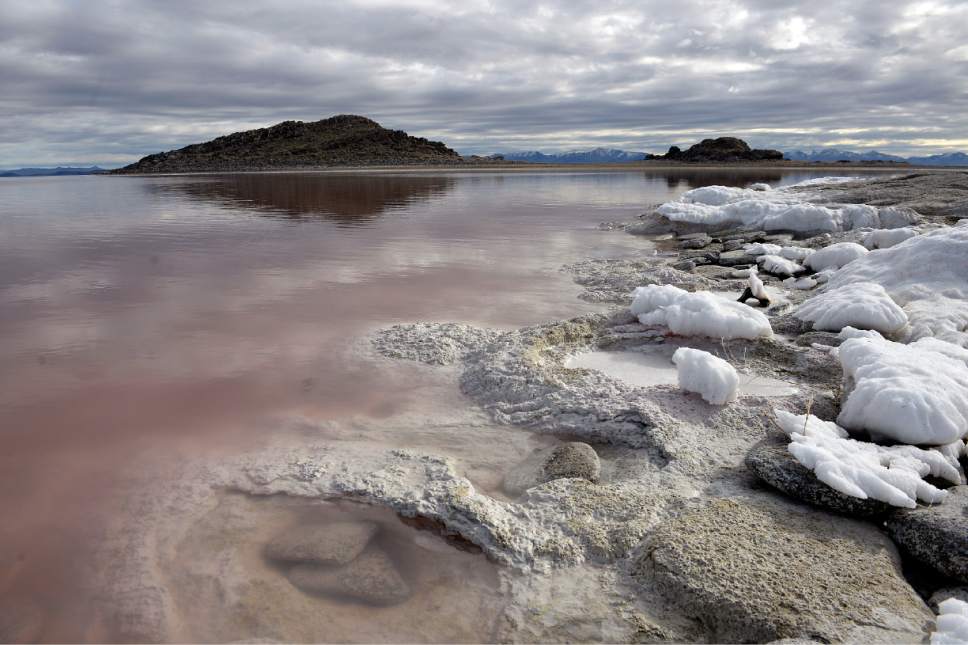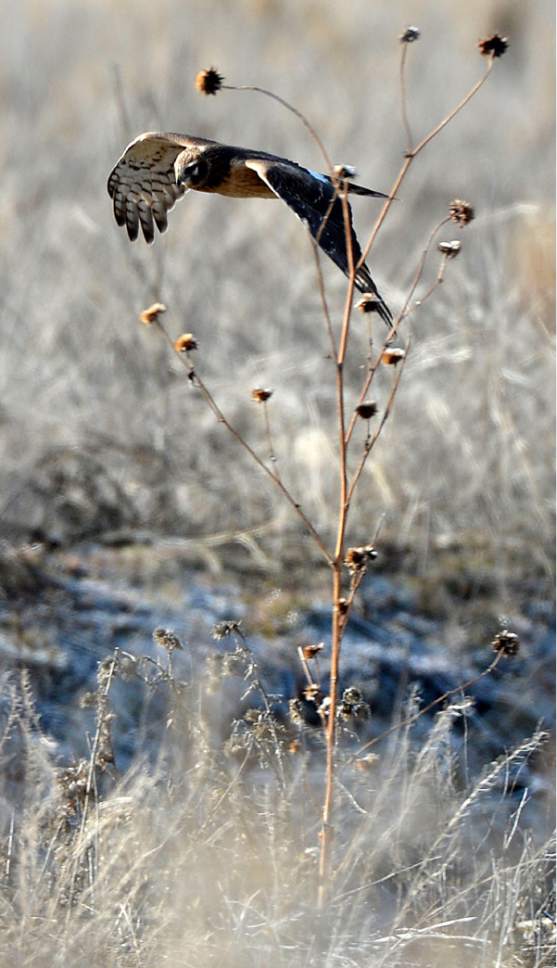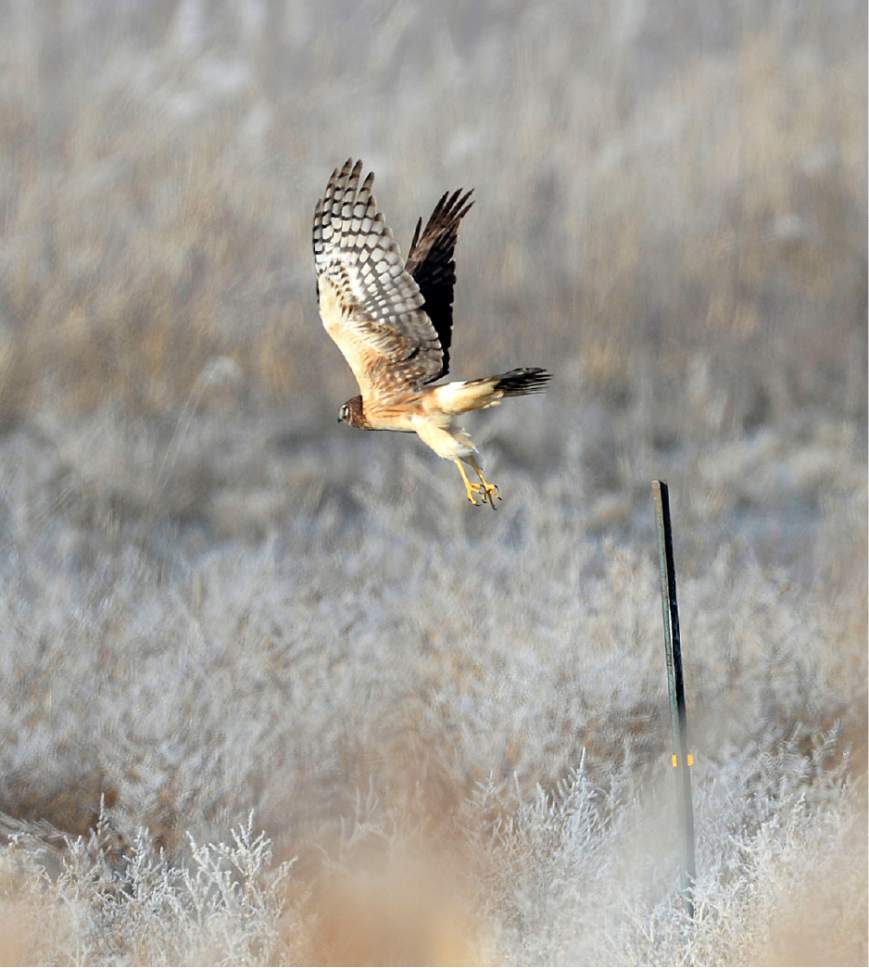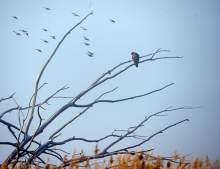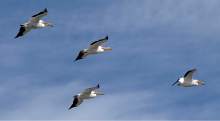This is an archived article that was published on sltrib.com in 2017, and information in the article may be outdated. It is provided only for personal research purposes and may not be reprinted.
One of the nation's pre-eminent environmental organizations is setting up shop in Salt Lake City after authoring a report that indicates the Great Salt Lake is half its natural size.
Earlier this month, the National Audubon Society released its finding regarding the health of saline lakes in the Western United States. The culmination of months of research, the report is intended to kick off a broader initiative headquartered in Salt Lake City, which will aim to protect the Great Salt Lake and similar bodies of water in the West through water conservation.
According to the report, "Nearly all saline lakes in the Intermountain West have decreased in size and increased in salinity as a result of the growing demand for water from agriculture, industry, and urban users as well as from climate change." As a consequence, it says, migratory shorebird populations have decreased by nearly 70 percent since 1973.
"We think of shorebirds sort of like airplanes," said Ella Sorensen, who manages the Gillmor Sanctuary on the Great Salt Lake for the National Audubon Society. "The Great Salt Lake and other saline lakes are extremely rich in food. So they stop and gas up."
As the lakes' habitats have dried up, it has a significant impact on bird populations, Sorensen said. In some cases, a single lake might provide critical feeding and nesting grounds for the majority of a species' population. So if that lake shrinks or altogether disappears, an entire species could be lost.
The Audubon Society found that in the past 150 years, human diversion has reduced the amount of water flowing into the Great Salt Lake by nearly 40 percent, causing the lake to drop some 11 feet. The lake's volume, according to the report, has decreased to almost half of what it once was.
Previous attempts to preserve saline lake systems as habitat for migratory birds have failed, the report says, because they focused on conserving wetlands and did not address the need for these systems to receive adequate water.
So the Audubon Society's latest initiative will seek to ensure these saline lake systems have the water they need, with a focus on legal negotiations and government intervention.
The program means the National Audubon Society will be more politically active in Utah than it has been in the past, said Marcelle Shoop, who the Audubon Society hired five months ago to head the Saline Lakes Program.
The initiative also will take a wide look at water conservation across the West. The Saline Lakes Program intends to preserve nine priority lakes: headlined by the Great Salt Lake, but also including Pyramid Lake and the Lahontan Wetlands in Nevada; Summer Lake, Lake Abert and the Klamath Basin in Oregon; and Honey Lake, Mono Lake, Owens Lake and the Salton Sea in California.
Shoop, who comes to the Audubon initiative after working on biodiversity issues for Rio Tinto, said she's still mapping out the new program's agenda and looking for a location for her Salt Lake City office. Once that's set up, she said, Audubon will hire more staff.
Shoop said she sees the Saline Lakes Program pursuing two simultaneous directions. One will focus on educating decision makers and the public about the importance of saline lakes and the habitat they provide for birds. The other will work with stakeholders to find ways to reduce water use, avoid additional water diversions and eventually dedicate some inflows for use by the natural ecosystem.
In Utah, Shoop said, the Audubon initiative intends to encourage Utah leaders to find alternatives to large-scale water development projects, such as the Bear River diversion.
The Great Salt Lake will be a focal point of the program, Shoop said, not only because of its size and its importance to migratory birds but because the lake is at a turning point. Unlike other saline lakes in, for example, California, which have essentially become long-term restoration projects after being decimated by water diversion and drought, Shoop said she believes there still is a chance to save the Great Salt Lake from a similar fate.
She said: "Hopefully by being engaged now we can work with others to come up with solutions that create a different path."
Twitter: @EmaPen


